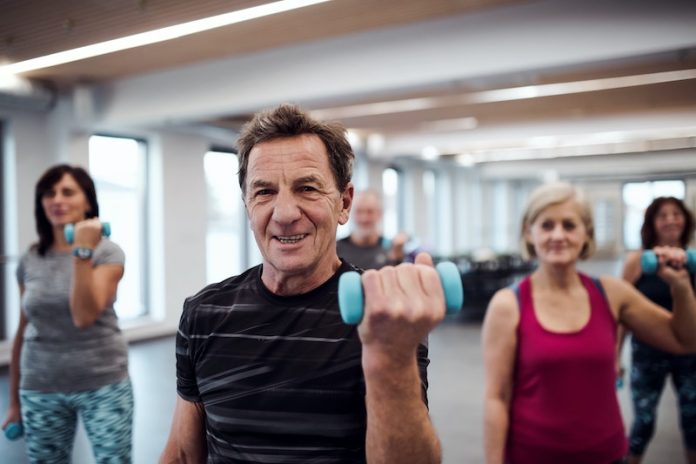
From the University of Western Australia, a fresh study has surfaced.
The researchers have discovered something interesting – a bit of morning exercise helps lower blood pressure for older folks who are overweight and don’t move around much.
And there’s more! Breaking up long periods of sitting with little bouts of exercise seems to have extra benefits.
What’s the Deal with Blood Pressure?
Let’s pause for a moment and talk about blood pressure. Imagine a water pump pushing water through a hose. That’s kind of like your heart pumping blood through your arteries.
The force the blood makes against the walls of your arteries is your blood pressure.
When doctors measure blood pressure, they wrap a cuff around your arm. It gets tighter slowly. The reading you get has two numbers.
The first one is your systolic blood pressure. It’s the pressure made when your heart squeezes and sends blood out.
The second one is your diastolic blood pressure. This one shows the pressure when your heart is taking a break and filling up with blood.
The Experiment
So, let’s get back to the study. The researchers wanted to see if mixing exercise with breaks in sitting could help lower blood pressure. They gathered 67 older adults who didn’t move around much.
They had these people do three different things, each on a different day. The first day, they just sat around for eight hours. The second day, they took a 30-minute moderate walk.
The third day, they took the same 30-minute walk but also took short walking breaks during the eight hours of sitting.
The Results Are In
What did they find? Compared to just sitting, both exercise options helped to lower average blood pressure over the eight hours.
And compared to just exercise and sitting, adding in the short breaks helped to lower systolic blood pressure even more – by about 1.7 mm Hg.
Interestingly, the women in the study seemed to benefit the most from the exercise plus breaks routine – their systolic blood pressure went down by 3.2 mm Hg.
There was also a decrease in something called epinephrine in women who did the exercise sessions. This chemical is linked to stress and heart disease. But in men, it actually increased slightly.
What Does This Mean?
These findings could be useful in figuring out the best ways to help older adults lower their blood pressure and reduce their risk of heart disease.
Everyone is different, and it’s becoming clear that personalized strategies might be the way to go.
The study was led by Michael J. Wheeler and his team, and the results were published in the journal Hypertension.
If you care about high blood pressure, please read studies about how fasting may help reverse high blood pressure, and beetroot juice could help reduce blood pressure
For more information about health, please see recent studies about 5 medicines to treat high blood pressure, and results showing diets high in flavonoids could help reduce stroke risk.
Follow us on Twitter for more articles about this topic.
Copyright © 2023 Knowridge Science Report. All rights reserved.


